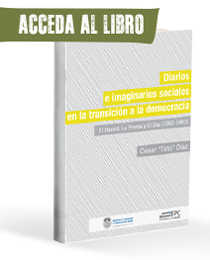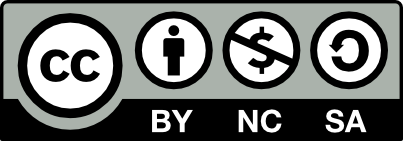The Churches Like Specialized Communication Organizations:
The Case Of American Protestantism
DOI:
https://doi.org/10.24215/24690457e034Keywords:
history, Protestantism, communication, methodology, tele-preachingAbstract
Intellectual output, cultural dissemination, and evangelical preaching have been most important symbols of the Protestantism. This historical trend is perceived clearly between the different Protestant models of communication in the United States. Since the first radio and television casts, there has been an evident trend in press specialization that has created the best context to the spread the Protestant message, via phenomenon like tele-preaching. All the current trends that have emerged through the network of Protestant organizations have converged in the development of a popular and important visual culture.
Downloads
References
Agudíez, P. (1995). Los telepredicadores, los talk shows y la primera enmienda. ¿Cómo hay que mirar y cómo hay que escuchar en los Estados Unidos de América? Cuadernos de Información y Comunicación, 1(1), 143-156. Recuperado de https://revistas.ucm.es/index.php/CIYC/article/download/CIYC9595110143A/7467
Campbell, H. (2013). «Community». En H. Campbell (Ed.), Digital Religion. Understanding Religious Practice in New Media Worlds (pp. 57-71). Nueva York, Estados Unidos: Routledge.
Careaga, A. (2001). eMinistry. Connecting with the Net Generation. Grand Rapids, Estados Unidos: Kregel Publications.
Djupe, P. y Calfano, B. (Eds.). (2014). God Talk. Experimenting with the Religious Causes of Public Opinion. Filadelfia, Estados Unidos: Temple University Press.
Ellens, H. (1974). Models of Religions Broadcasting. Grand Rapids, Estados Unidos: Eerdmans Press.
Ellwood, R. (1997). The Fifties Spiritual Marketplace. American Religion of the Decade of Conflict. New Brunswick, Estados Unidos: RutgersUniversityPress.
Fernández, J. y Estévez, F. (1999). Fundamentos de la Información Periodística Especializada. Madrid, España: Síntesis.
Hangen, T. (2002). Redeeming the Dial. Radio, Religion & Popular Culture in America. Chapel Hill, Estados Unidos: University of North Carolina Press.
Haselden, K. (1968). Morality and the Mass Media. Nashville, Estados Unidos: Broadman Press.
Hill, G. (1983). Airwaves to the Soul. The Influence and Growth of Religious Broadcasting in America. Saratoga, Estados Unidos: R&E Publishers.
Hoover, S. (2006). Religion in the Media Age. Nueva York, Estados Unidos: Routledge.
Lochte, B. (2008). Christian Radio in a New Millennium. Journal of Radio and Audio Media, 15(1), 59-75.
Saperas, E. (1992). La sociología de la comunicación de masas en los Estados Unidos. Una introducción crítica. Barcelona, España: Promociones y Publicaciones Universitarias.
Saperas, E. (2012). Comunicación mediática y sociedad. Manual de Teorías de la comunicación. Madrid, España: OMM Editorial.
Stout, D. y Buddenbaum, J. (Eds.) (1996). Religion and Mass Media. Audiences and Adaptations. Thousand Oaks, Estados Unidos: International Educational and Professional Publisher.
Van Riel, C. (1997). Comunicación corporativa. Madrid, España: Prentice Hall International.
Ward, M. (1994). Air of Salvation. The Story of Christian Broadcasting. Grand Rapids, Estados Unidos: Baker Book House.
Published
How to Cite
Issue
Section
License
Copyright (c) 2019 José Antonio Abreu Colombri

This work is licensed under a Creative Commons Attribution-NonCommercial-ShareAlike 4.0 International License.
The acceptance of an original by the journal implies the non-exclusive transfer of the patrimonial rights of the authors in favor of the publisher, who allows the reuse, after its edition (postprint), under a Creative Commons License Attribution-NonCommercial-ShareAlike 4.0 International.
According to these terms, the material can be shared (copy and redistribute in any medium or format) and adapted (remix, transform and create another work from the material), provided that a) the authorship and the original source of their publication (magazine and URL of the work) are cited, b) is not used for commercial purposes and c) the same terms of the license are maintained.
The assignment of non-exclusive rights implies that after postprint in IMPRONTAS de la historia y la comunicación authors may publish their work in any language, media and format; in that case, it is requested that they signal that the material was originally published by this journal.
Assignment also entails the authors’ authorization for the work to be collected by SEDICI, the institutional repository of the Universidad Nacional de La Plata, and for it to be indexed in the databases that the publisher thinks appropriate for enhancing the visibility of the published work and its authors.
In addition, the journal encourages authors to submit their works to other institutional and thematic repositories after their publication in IMPRONTAS de la historia y la comunicación, under the assumption that offering society unrestricted access to scientific and academic production contributes to a greater exchange in global knowledge.






.jpg)


.png)


.png)


















